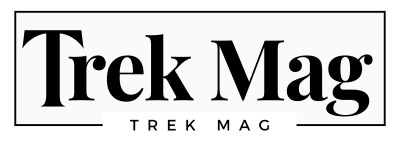Owning an older home can be a delightful experience, filled with charm and character that newer constructions often lack. However, one of the critical aspects that comes with owning an older property is ensuring its safety, particularly when it comes to gas systems. Gas safety is a significant concern in older homes due to the unique challenges posed by aging infrastructure. Understanding the Landlord Gas Safety Certificate cost is essential for homeowners and landlords alike, as it ensures compliance with regulations and helps maintain a safe environment. In this blog, we will explore the common issues faced and provide practical solutions to help ensure gas safety in older homes.
The Challenges of Gas Safety in Older Homes
Outdated Gas Pipes and Fittings
One of the primary concerns in older homes is the age of the gas pipes and fittings. Many older properties were built with materials that are no longer considered safe for gas lines. For instance, homes built before the 1960s might have iron or steel pipes, which can corrode and weaken over time. This corrosion can lead to leaks, which pose a serious risk of fire and explosion.
Inadequate Ventilation
Older homes often lack the adequate ventilation needed for modern gas appliances. Proper ventilation is crucial to ensure that any gas leaks or fumes are safely dispersed. Without it, there is a higher risk of gas buildup, which can be hazardous to the occupants. Many older homes may not have the necessary vents or might have vents that are blocked or insufficiently sized.
Outdated Gas Appliances
Gas appliances in older homes might also be outdated. Older models may not meet current safety standards, and their efficiency may have declined over the years. This can lead to incomplete combustion, which not only reduces the appliance’s efficiency but also increases the risk of harmful emissions like carbon monoxide.
Lack of Modern Safety Devices
Modern gas safety devices, such as carbon monoxide detectors and automatic shut-off valves, are often not present in older homes. These devices are crucial in detecting gas leaks and preventing potential disasters. The absence of such technology can significantly increase the risk associated with gas use.
Solutions for Ensuring Gas Safety
Upgrading Gas Pipes and Fittings
To address the issue of outdated gas pipes and fittings, it is essential to have a professional inspection conducted. A licensed gas fitter can assess the condition of your gas lines and recommend necessary upgrades. Replacing old pipes with modern, corrosion-resistant materials, such as flexible plastic or stainless steel, can significantly enhance safety.
Improving Ventilation
Improving ventilation in an older home can be a bit more involved, but it is crucial for gas safety. Consider having a professional evaluate the ventilation system and suggest improvements. This might include installing new vents, ensuring existing vents are clear, or adding ventilation to areas where gas appliances are located. Proper ventilation helps in dispersing any gas that might accidentally escape, thereby reducing the risk of dangerous accumulation.
Replacing Old Gas Appliances
Replacing outdated gas appliances with modern, energy-efficient models is another important step. Modern appliances are designed to meet current safety standards and typically come with advanced safety features. When selecting new appliances, make sure they are certified and meet the latest safety regulations. A professional can help with proper installation to ensure that everything is set up safely and correctly.
Installing Modern Safety Devices
Installing modern safety devices is essential for any home with gas appliances. Carbon monoxide detectors should be placed near sleeping areas and in the vicinity of gas appliances. These detectors can alert you to the presence of dangerous levels of carbon monoxide, which is a colorless, odorless gas that can be deadly. Additionally, installing automatic shut-off valves can provide an extra layer of safety by cutting off the gas supply in the event of a detected leak.
Regular Maintenance and Inspections
Regular maintenance and inspections are vital for maintaining gas safety in older homes. Schedule annual check-ups with a licensed gas professional who can inspect your system, check for leaks, and ensure that all components are in good working order. Regular maintenance helps in identifying and addressing potential issues before they become serious problems.
Conclusion
Gas safety in older homes requires a proactive approach due to the unique challenges posed by aging infrastructure. Outdated pipes, inadequate ventilation, old appliances, and the lack of modern safety devices all contribute to potential risks. However, by upgrading gas pipes and fittings, improving ventilation, replacing old appliances, and installing modern safety devices, homeowners can significantly enhance the safety of their gas systems. Regular maintenance and inspections are also crucial in ensuring ongoing safety and preventing accidents.
- Owning an older home doesn’t mean you have to compromise on safety. With the right measures in place, you can continue to enjoy the charm of your historic property while ensuring that it remains safe and secure for you and your family, If you want to stay updated with posts like this, please follow us on Trek Mag.








